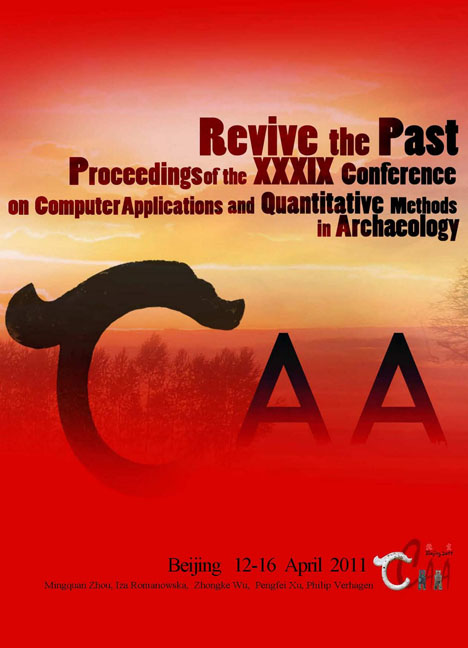 Revive the Past
Revive the Past Large Scale Angkor Style Reliefs: High Definition 3D Acquisition and Improved Visualization Using Local Feature Estimation
Published online by Cambridge University Press: 23 June 2021
Summary
Abstract:
It is the desire of stone conservators to preserve bas-reliefs endangered by acid rain, vandalism and structural instabilities. Documenting these bas-reliefs digitally will help minimizing the dangers of working on fragile structures while handling and analysing such large data sets is a new challenge for scientific computing in cultural heritage. From our experience in related research we developed a rapid workflow for 3D acquisition and visualization. It uses a close-range 3D scanner based on structured light and stereo vision. This paper shows the work done during our field trip in Banteay Chhmar, Cambodia where the temple complex is strongly endangered and large parts are already collapsed. The outcome of this digital documentation is a large collection of high-resolution 3D models each featuring a spatial resolution of 50-100μm. To extract more information about iconographic details we developed a new method of visualization using Multi Scale Integral Invariant surface filtering.
Key Words: Archaeological Documentation, Close Range 3D Scanning, Pattern Recognition, Cambodia
Introduction
The temple complex of Banteay Chhmar is one of the largest known Khmer temples as well as one of the largest temples known to man. It occupies an area of about nine square kilometres (Groslier 1937) and is located in the North-West of Cambodia close to the border with Thailand. King Jayavarman VII (AD 1181 - 1219) commissioned it at the end of the civil war to honour his son and four of his army generals who lost their lives while defending the Khmer empire against the Champa kingdom (Chandler 2008). The site features one main temple as well as eight satellite temples.
Climate, vegetation, acid rain as well as structural instabilities and severe looting has caused very serious destruction to the temple complex. Only about 20% of the main structures are still intact and most of these walls remain to be stabilized. The necessity to preserve the valuable carvings and structures was the motivation for our 3D acquisition campaign in Cambodia which took four months. In this paper, we present two parts of this larger project in more detail.
The map in figure 1a shows the location of the Banteay Chhmar temple and figure 1b documents its current state of deterioration.
- Type
- Chapter
- Information
- Revive the PastProceedings of the 39th Conference of Computer Applications and Quantitative Methods in Archaeology, pp. 70 - 80Publisher: Amsterdam University PressPrint publication year: 2012
- 1
- Cited by
